According to a study conducted in 2021 by Statista, gaming applications were responsible for over 55.5 billion downloads worldwide, making them the most downloaded app category. This rocketed them far above tool apps, which generated 12.13 billion downloads globally, and social media apps, accumulating almost 10 billion downloads during the examined year.
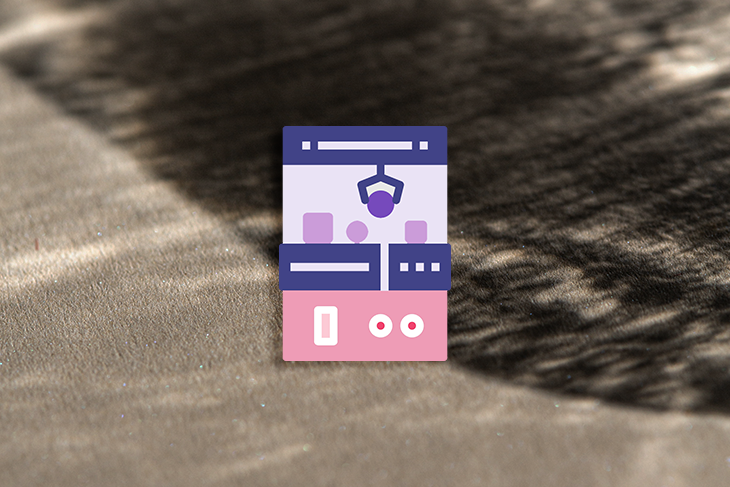
What is the magic ingredient that makes the game category the most downloaded in the app stores? In this article, we will try to understand the psychology behind a game, the structures used to build them, and easy examples of how to gamify non-game apps. Let’s start!
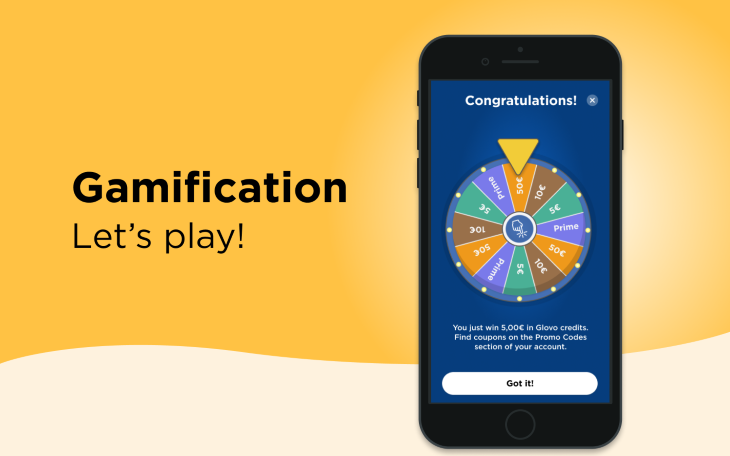
Let’s be honest, the final objective of all mobile applications is to generate money constantly by fulfilling a user’s needs. It’s important to focus attention on the adjective “constant,” a word that is used to describe something that occurs continuously or repeatedly.
Businesses are always looking for growth, so therefore an app, as a business itself, is looking to generate money constantly and grow its numbers each month.
The first thing we need to be aware of is that the application must fulfill a user’s needs. As much as we try to trick a user, if we are not satisfying a need, our application will never be successful; but if this is granted, we can enhance our user’s engagement by adding the typical elements found in games into our non-game applications.
Before we continue, let’s review some important terms that will help us with our gamification.
In this scenario, we can define engagement as how invested users are in using an app. In other words, the times a user opens an app and how much time they spend using it during the day.
The more minutes a user spends in your app, the more engagement the app generates, meaning you have more minutes to generate revenue.
There are three factors to consider when measuring engagement:
High engagement is a good sign a company can monetize an app. On the other hand, low engagement would make it difficult to ask for money from the user.
Monetization is not the topic of this article, but still it is important to mention a few ways you can generate some revenue, since this is the goal of gamification for many applications:
Another important concept here that goes hand in hand with engagement is the concept of loyalty. Loyalty is understood in these circumstances as a retention strategy that consists of rewarding customers for constantly engaging with your brand instead of competitors’ brand: the more they buy, the more they get.
In a world with different apps and websites offering the same product or service, it’s really important to generate a fanbase of loyal customers that will always choose you over your competitors.
Retaining an existing customer is 5 times cheaper than acquiring a new one, and a significant portion of an ecommerce store’s revenue, specifically 41 percent, is generated by only 8 percent of its loyal customers.
Generally, gamification strategies fall inside loyalty strategies because a player returns to the app to play, making the player a loyal fan.
The goal of your app is to sell a physical product or service that satisfies a user’s needs. However, you face two challenges: maintaining a steady flow of revenue over time and differentiating yourself from direct competitors to become the top product in the market.
To address these challenges, you want to create a fanbase that is engaged and loyal to your product.
Gamification is one potential characteristic that can help you achieve this goal. While there may be other methods to explore, gamification can certainly help a business increase customer engagement.
To learn more about gamification, I carefully benchmarked lots of games and went through different research interviews and surveys on the Glovo App. I would like to explain the main insights I discovered about successful gamification strategy:
So now you know a bit more about the world of games, and you’re probably putting together how you could incorporate one into your app. Let me outline game structure so you can bring your idea to life and sell your team on the UX benefits with a clear plan.
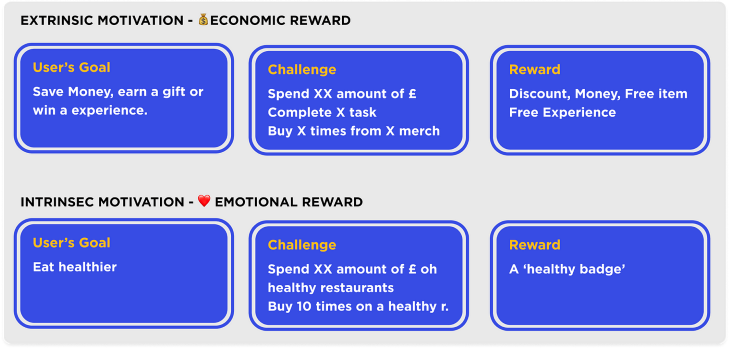
The success of gamification relies on a well-structured game that can stimulate players. This structure consists of three critical components:
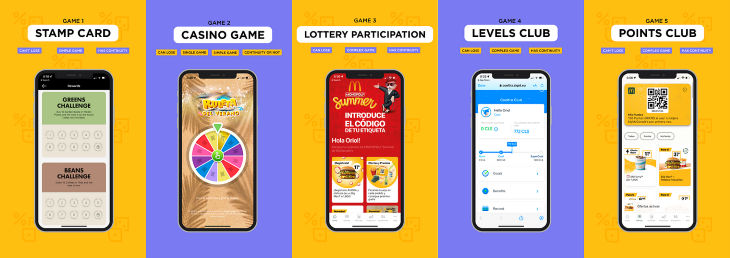
We mentioned this earlier, but games utilize four fundamental concepts to keep users engaged, whether the game is a short or an infinite experience. These concepts can also be applied to other forms of gamification.
These four concepts are key to keeping users engaged and can be used effectively in gamification.
When playing a game, whether it’s a single play or it has continuity, the resolution of the game is winning or failing.
There are some situations where we always win, even if it’s a morale win without a real prize. Other apps play by the rules and failing is a possibility.
Including the possibility of failing is a good option because it feels more real and makes the game more competitive.
Gamification is not a one-size-fits-all approach, and it can vary in complexity depending on the intended audience and the goals of the game. For example, some apps have comprehensive gamification systems that incorporate various elements such as points, levels, challenges, and rewards, making it a more challenging and complex game. In contrast, ecommerce apps usually feature simpler gamification features, like easy games or long-term loyalty programs that provide points or levels.
The simplicity of games tends to attract more users, especially those who want a quick and straightforward reward system. However, the more complex games can offer more engagement and motivation for players, but they require more effort and may not be suitable for all users.
Game developers must carefully evaluate the complexity of their games to ensure they provide the right level of challenge and motivation for their target audience.
Maintaining continuity is a crucial element of gamification that helps to ensure users remain engaged and invested in the game. While some games may not require continuity, most are designed to incorporate some level of continuity, whether through a long-term loyalty program or a series of mid-term challenges.
Popular structures for creating long-term loyalty include points and levels, while challenges and badges can provide a mid-term focus for users. Game designers should carefully consider the desired level of continuity for their game and structure it accordingly to meet the needs and expectations of their target audience.
In loyalty programs, rewards play a crucial role in motivating users to participate, and gamification can enhance this experience. While discounts and promo codes are effective motivators, non-monetary rewards can also be useful in some cases.
The brain’s reward system shows that earning points or levels can generate similar sensations to social media likes, which trigger dopamine and create an addiction to seeking gratification. Therefore, non-monetary rewards such as early access to products, exclusive experiences, or additional features may be more appropriate in certain contexts.
Ultimately, the choice of reward should align with the goals of the gamification strategy and the preferences of the target audience.
With all the concepts we have unveiled in this article, anybody can combine the elements to create their own game. Here is a quick list of topics you need to go through in order to create the game, all of which have been reviewed previously in this article.
N.B., before creating the game, remember to set goals and objectives. Not everything is valid, so it is important to know what the business objective behind the game is. Typical reasons include increasing sales, promoting a product, or generating loyalty.
I recommend you explore the following apps and games to get to know more about gamification on ecommerce apps:
People like to play, so mixing their difficult or undesirable duties with a dynamic and fun approach can help your users enjoy their tasks. This, in turn, can improve business metrics.
Each product or service requires analysis to create the perfect scenario for their game. Keep in mind that not all problems can be solved with a game, but rather the game can be a solution to a problem.
Header image source: IconScout
LogRocket's Galileo AI watches sessions and understands user feedback for you, automating the most time-intensive parts of your job and giving you more time to focus on great design.
See how design choices, interactions, and issues affect your users — get a demo of LogRocket today.
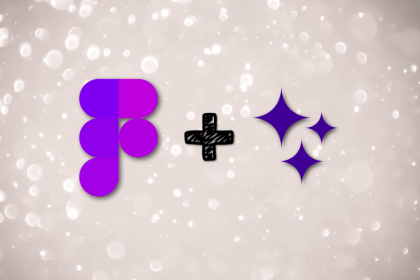
Figma Make is here to automate your design-to-code workflow. I tested it. Let’s talk about the good, the bad, and the straight-up weird.
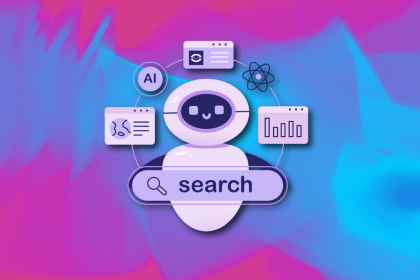
After designing AI search systems, I’ve seen what builds trust — and what kills it. Here’s my take on what really works.
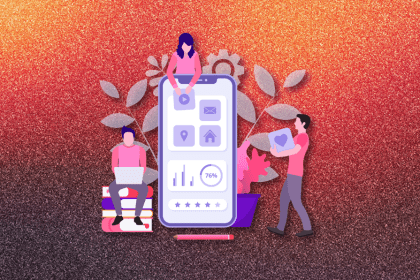
I used to think ‘clean’ design meant hiding things. Turns out, less isn’t always better. This blog walks through lessons from my own overdesign moments.

This blog outlines how poor feedback, unclear roles, and low UX maturity quietly burn out even great designers — and what to do instead.